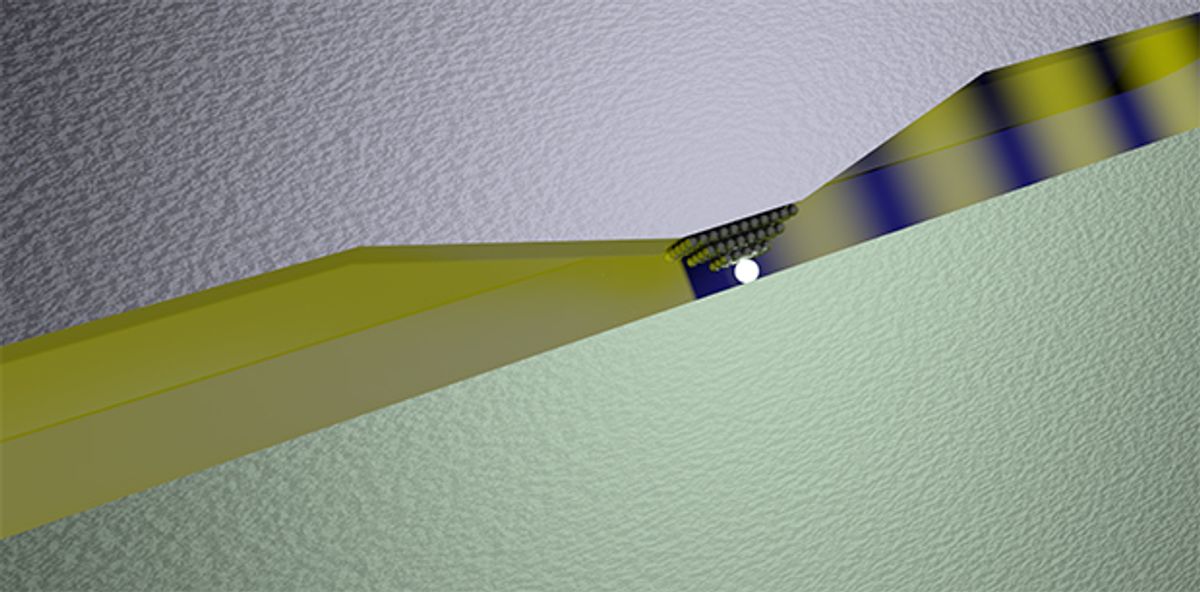You may have heard of the single-atom transistor that thumbed its nose at Moore’s Law once and for all. But that transistor was based on the electron, a relative slow poke. What if you could develop a single-atom transistor based on the movement of photons, which travel at the speed of light? Now that would be both small and fast.
Now researchers at ETH Zurich Switzerland have developed the equivalent of a single-atom photonic transistor by fabricating the world’s first single-atom optical switch.
This latest achievement is actually based on research performed by Jürg Leuthold and his team at ETH just six months ago in creating what was at the time the world’s smallest optical modulator. In that research, described in the journal Nature Photonics, Leuthold and his team fabricated an optical modulator (which is used to change electrical information into an optical signal) that was only 10 micrometers across—10,000 times smaller than modulators in use today.
That’s a significant reduction in size, but why not get down to the smallest size: an atom? Well, the problem had been that it was impossible to create devices for transmitting information with light that had dimensions smaller than the smallest wavelength of laser light, or 1.55 micrometers across.
But this size restriction has been overcome of late with the introduction of plasmonics, which operates by transferring photons’ energy to the electrons on a metallic surface. This transfer of energy causes the electrons to begin to oscillate like a wave with the same frequency as the incoming light. These oscillations are smaller than the wavelengths of light, and thereby make it possible to reduce the dimensions of the photonic-based devices.
Leuthold and Alexandros Emboras, another ETH professor, in research described in the journal ACS Nano Letters, were able to leverage plasmonics to create an optical switch that uses a small voltage to relocate an atom and essentially produce a switch that can be turned on or off.
The device that the Swiss-based researchers developed started with two pads of metal—one silver and one platinum. The pads were both placed on top of an optical waveguide made of silicon, with only a few nanometers separating them. As if that extreme proximity weren’t enough, the silver pad has a small protrusion that narrows the gap between the two metal pads even more.
When the light comes in from an optical fiber, it is guided to the gap between the two metals by an optical waveguide. Now, with only a few nanometers gap between the two metal pads, the light waves couldn’t pass through. But the plasmon waves on the surface of the metallic pads can. Once these waves of electrons pass through the gap, they can then be turned back again into an optical signal.
To create the single-atom switch, the researchers applied a small voltage to the silver pad, causing a single silver atom to migrate out to the tip of the small protrusion. This creates a short circuit between the silver and platinum pads and allows current to flow between the two of them. Once the voltage is turned off, the silver atom returns to the silver pad and the circuit is broken. This can be done millions of times.
While the researchers concede that the device is not yet ready for series production, Leuthold told IEEE Spectrum via e-mail that he has full confidence that this device could be possible in a few years with the introduction of 10-nm lithography.
Leuthold also conceded that, at the moment, the device they have produced is not the fastest optical switch. But he insists that this is just a first device and that there is nothing in theory that precludes the device from becoming faster.
The researchers say they are eager to work with anyone in industry that sees potential in this line of research.
Dexter Johnson is a contributing editor at IEEE Spectrum, with a focus on nanotechnology.



